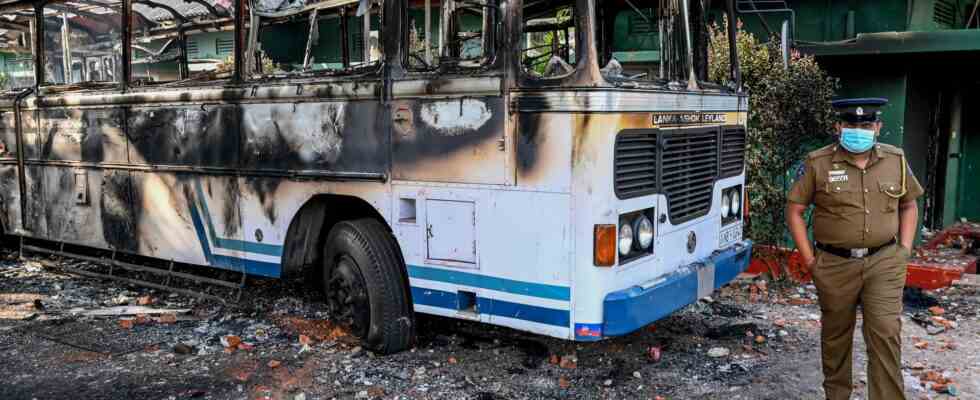Status: 04/02/2022 1:39 p.m
No fuel, no electricity, skyrocketing costs: the island nation of Sri Lanka is suffering from an unprecedented economic crisis. After angry anti-government protests, President Rajapaksa declared a state of emergency.
Sri Lanka’s President Gotabaya Rajapaksa has declared a nationwide state of emergency amid rising unrest. The police and military presence on the streets of the South Asian island nation had previously been increased.
The step serves public safety, the protection of order and the security of supply, it said in a statement. Under the ordinance, the President can authorize arrests, seizure of property, and searches of premises. He can also change or suspend laws.
Dozens injured in protests
Hundreds of demonstrators tried to storm the president’s private residence on Thursday. They set fire to two military buses and a police car, attacked officers with bricks and blocked a main road into Colombo with flaming tires. Security forces fired into the crowd and used tear gas and water cannon to disperse the protesters. 54 people were arrested. There were dozens injured.
There were also demonstrations and road blockades in other cities. A curfew was imposed on Colombo on Friday as a result of the protests.
External debt of $55 billion
The protests were triggered by an unprecedented economic crisis. Suffering from severe shortages of essential goods, soaring prices and power outages, Sri Lanka is experiencing the most painful economic downturn since independence in 1948. Many fear the Indian Ocean island nation will default on its debt. Experts estimate Sri Lanka’s foreign debt at $55 billion.
The power goes out for several hours a day because there is not enough fuel to run the power plants and the dry weather has exhausted the hydroelectric capacity. Due to the shortage of fuel, the price of diesel has also skyrocketed. Many of the approximately 22 million inhabitants rely on their mopeds, tuk-tuks, mobile kitchens and delivery services to get by in everyday life.
Queue for petrol – Dozens of people wait for fuel in front of a gas station in Colombo. It’s hardly available in Sri Lanka anymore.
Image: AFP
Three brothers of the President in government
An important newspaper group will no longer print Saturday editions until further notice – due to a lack of paper. Some weekly newspapers are only printed monthly. Because of the paper shortage, the government had recently postponed exams in schools. The exam papers with the questions could not have been printed, it said.
The demonstrators hold Rajapaksa responsible for the desolate situation. They accuse the political clan of the Rajapaksas of economic and socio-political failure and corruption. Three of the president’s brothers are ministers in the government. Mahinda Rajapaksa is Prime Minister, Basil Rajapaksa Finance Minister and Chamal Rajapaksa Agriculture Minister. With Namal Rajapaksa, son of the prime minister, another family member sits in the cabinet as sports minister.
More protests planned for Sunday
After the state of emergency was declared, the US ambassador warned the government against abuse of the measure. Sri Lankans have the right to protest peacefully, Ambassador Julie Chung tweeted. This is essential for the democratic expression of opinion. “I am monitoring the situation closely and hope that the coming days will bring restraint from all sides, as well as much-needed economic stability and relief for those suffering.”
According to the United Nations, the human rights situation in Sri Lanka is also in an “alarming” decline. A report published by UN Human Rights Commissioner Michelle Bachelet at the end of February documents the discrimination against religious and ethnic minorities and the targeted action by security forces against civil society groups.
More demonstrations are planned across the country for Sunday. The government has therefore massively expanded the military presence and given the soldiers special powers. More and more heavily armed soldiers were stationed at gas stations and other strategic points.

